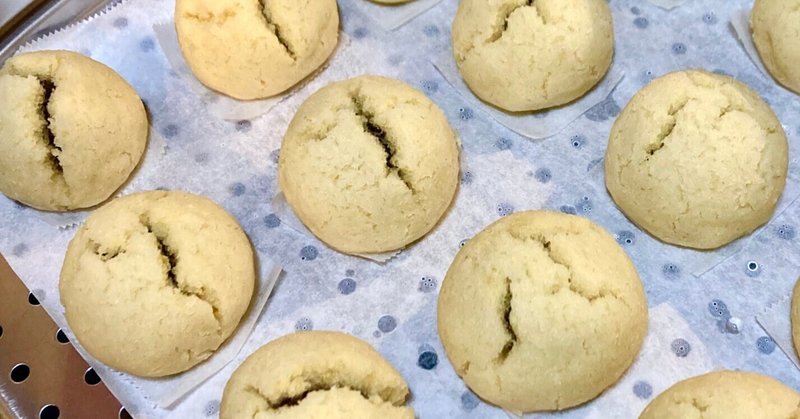
Dig Japan vol.6 “Kimi-shigure (黄身しぐれ)”
Kimi-shigure (黄身しぐれ) is wagashi made by wrapping koshian (strained azuki bean paste) in the dough made of a mixture of egg yolks, shiroan (white kidney bean paste), joshinko (high quality powder of non-glutinous rice), and then steaming it. The cracked pattern that forms on the surface when steamed is likened to shigure (時雨), light rain that comes and goes from late autumn to early winter. The standard combination is the mixture of white bean paste and yolk on the outside, and koshian or shiroan on the inside, but there are also some that have the inside and outside reversed. Its origin is uncertain, but the most likely theory is that it was introduced from Korea during the Azuchi-Momoyama period.

Shigure, a Japanese confectionery, is made by mixing azuki bean paste with joshinko, pureeing it, placing it in a frame, and steaming it. When this is divided into small pieces, and the dough is placed in a mold with another filling as the core and steamed, is called “Shigure-manju (時雨饅頭).” And kimi-shigure is so-called because the yolk (kimi in Japanese) is mixed into shiroan, and the cracks that form when it is steamed are likened to sigure, so it is also written in kanji as “黄身時雨” or “黄味時雨.” Generally, it has a crumbling texture, and its filling is koshian or shiroan, but sometimes the inside and outside are reversed.

Kimi-shigure may have the image of being wagashi for autumn and winter, which is the shigure season, but it is also sold as a confectionery for early spring. Depending on wagashi shops, we can also find one with a faint pink color peeking out from the cracks, making it look like the cherry blossoms are waiting for blooming. There is also matcha-shigure, which has matcha mixed into the filling.
The origin of kimi-shigure is uncertain. One famous theory is that it was introduced from Korea during the Azuchi-Momoyama period, but there is little documentation to prove this. Similar wagashi to kimi-shigure, there is “Momoyama (桃山)” which is said to have been accomplished in modern times. Its recipe is to mix arrowroot powder with shiroan, egg yolk, sugar and bake, and the combination of shiroan and yolk resembles kimi-shigure.
This article was written by 𝐡𝐢𝐫𝐨𝐤𝐨, working as a freelance translator and press for overseas apparel brands in Japan, with the purpose of broadening her insight into the Japanese traditional culture.
いつも読んでくださってありがとうございます☺︎いただいたサポートは、記事のクオリティ向上に活用させていただきます。応援よろしくお願いします❦
